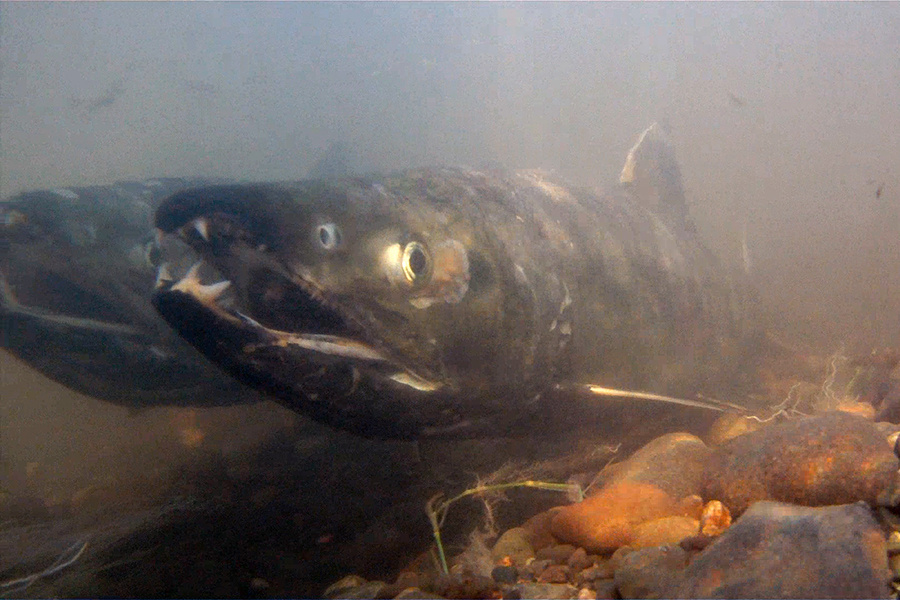Disaster aid has arrived, but Western Alaska’s salmon and crab problems continue
At the same time $216 million flows in for past years’ collapses, Yukon River communities face harvest closures because of low runs

As $216 million in federal aid is flowing to help Alaskans cope with salmon and crab collapses over the past three years, conditions that caused some of the harvest failures persist.
The Alaska congressional delegation announced on Friday that the U.S. Commerce Department released the disaster aid. The money is to go to harvesters, processors and communities affected by designated disasters in salmon and crab fisheries that occurred between 2020 and 2022. Some money will also go to research programs, the delegation said in the joint statement released by Sen. Lisa Murkowski, R-Alaska.
“This disaster funding comes at a time when several of our state’s fisheries are experiencing traumatizing and devastating collapses—so it will make a real difference for impacted fishermen and communities,” Murkowski said in the statement.
Commerce Secretary Gina Raimondo in December issued disaster declarations for the salmon and crab problems in Western Alaska and the Bering Sea, as well as some extremely weak salmon runs in 2020 in the Prince William Sound and Copper River areas. The biggest chunks of resulting disaster aid now arriving are designated as responses to Bering Sea and Norton Sound crab collapses.
In Western Alaska, salmon and crab disasters appear to be ongoing.
Yukon River runs are so poor that even subsistence fishing for Chinook salmon is off-limits this year. The Alaska Department of Fish and Game announced the closure on May 8.
The Chinook run is forecasted to be 62,000 to 104,000 fish throughout the basin, slightly higher than the 2022 return but much lower than the 10-year average of about 174,000 fish, according to the department. Chinook runs under 130,000 fish are generally too small to support a harvest, according to the department.
Chum runs are also expected to be poor, though marginally better than the record-low 2021 levels, the department said. There is enough uncertainty about the size that subsistence chum harvests remain possible, though restrictions are likely, the department said. As with Chinook, there will be no commercial chum harvests, the department said.
Additionally, coho salmon returns in the Yukon River, though not expected to be as weak as the Chinook and chum runs, are likely to be too low to support any commercial harvests, the department said.
For the Kuskokwim River, there is no specific 2023 salmon forecast, but all salmon runs in the Arctic-Yukon-Kuskokwim region are expected to be weak, “resulting in no or well below average commercial harvest forecasts for all species,” said the department’s 2023 salmon run and harvest projection report, released in April.
For Bering Sea snow crab, signs are that the problems that led to the first-ever harvest closure, which was announced last October, will last for years. The National Oceanic and Atmospheric Administration Fisheries Service 2022 survey found that despite the emergence of cooler and more normal temperatures, mature male snow crab abundance was the lowest on record and mature female snow crab abundance was the third lowest on record. Scientists have said the crab problems are part of a long-term transition linked to climate change and the resulting “borealization” of the Bering Sea.
U.S. Rep. Mary Peltola, D-Alaska, in the joint statement issued by Murkowski, referred to the recently announced Yukon River closures as a reason to pursue more comprehensive action beyond disaster response. This will be the fourth consecutive year of Yukon River chum closures, she noted.
“This is a crisis that threatens both food security for many villages and our cultural heritage. Disaster relief funding for specific fisheries alone is not enough — we need large-scale action. I am continuing to work with NOAA as they update their National Standards for fisheries management, and will pursue every possible solution to protect our fish,” she said.
NOAA Fisheries on Monday announced its plans to upgrade the National Standards, which are guidelines required under the Magnuson-Stevens Fishery Conservation and Management Act. Subjects singled out for revisions are fishery allocations, community involvement and bycatch, NOAA Fisheries said. Public comments on the revisions will be accepted by the agency through Sept. 12.
Peltola noted in a separate statement that it has been 15 years since the standards were last updated.
Alaska Beacon is part of States Newsroom, a network of news bureaus supported by grants and a coalition of donors as a 501c(3) public charity. Alaska Beacon maintains editorial independence. Contact Editor Andrew Kitchenman for questions: [email protected]. Follow Alaska Beacon on Facebook and Twitter. You can read the original here.

